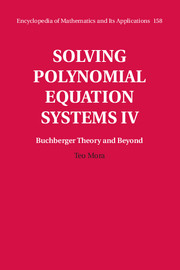Refine search
Actions for selected content:
48179 results in Computer Science
Developing, evaluating, and refining an automatic generator of diagnostic multiple choice cloze questions to assess children's comprehension while reading*
-
- Journal:
- Natural Language Engineering / Volume 23 / Issue 2 / March 2017
- Published online by Cambridge University Press:
- 14 April 2016, pp. 245-294
-
- Article
- Export citation
ROB volume 34 issue 5 Cover and Back matter
-
- Article
-
- You have access
- Export citation
ROB volume 34 issue 5 Cover and Front matter
-
- Article
-
- You have access
- Export citation
Harmonically terminated high-power rectifier for wireless power transfer
-
- Journal:
- Wireless Power Transfer / Volume 3 / Issue 2 / September 2016
- Published online by Cambridge University Press:
- 12 April 2016, pp. 75-82
- Print publication:
- September 2016
-
- Article
- Export citation
RESTRICTIVENESS RELATIVE TO NOTIONS OF INTERPRETATION
-
- Journal:
- The Review of Symbolic Logic / Volume 9 / Issue 2 / June 2016
- Published online by Cambridge University Press:
- 12 April 2016, pp. 238-250
- Print publication:
- June 2016
-
- Article
- Export citation
Deep-neural network approaches for speech recognition with heterogeneous groups of speakers including children†
-
- Journal:
- Natural Language Engineering / Volume 23 / Issue 3 / May 2017
- Published online by Cambridge University Press:
- 12 April 2016, pp. 325-350
-
- Article
-
- You have access
- HTML
- Export citation
EMBRACING THE TECHNICALITIES: EXPRESSIVE COMPLETENESS AND REVENGE
-
- Journal:
- The Review of Symbolic Logic / Volume 9 / Issue 2 / June 2016
- Published online by Cambridge University Press:
- 11 April 2016, pp. 325-358
- Print publication:
- June 2016
-
- Article
- Export citation
REC volume 28 issue 2 Cover and Front matter
-
- Article
-
- You have access
- Export citation
REC volume 28 issue 2 Cover and Back matter
-
- Article
-
- You have access
- Export citation
A Bound on the Number of Edges in Graphs Without an Even Cycle
- Part of
-
- Journal:
- Combinatorics, Probability and Computing / Volume 26 / Issue 1 / January 2017
- Published online by Cambridge University Press:
- 07 April 2016, pp. 1-15
-
- Article
- Export citation

Solving Polynomial Equation Systems IV
-
- Published online:
- 05 April 2016
- Print publication:
- 01 April 2016
W-types in homotopy-type theory – CORRIGENDUM
-
- Journal:
- Mathematical Structures in Computer Science / Volume 28 / Issue 1 / January 2018
- Published online by Cambridge University Press:
- 05 April 2016, p. 140
-
- Article
-
- You have access
- Export citation

